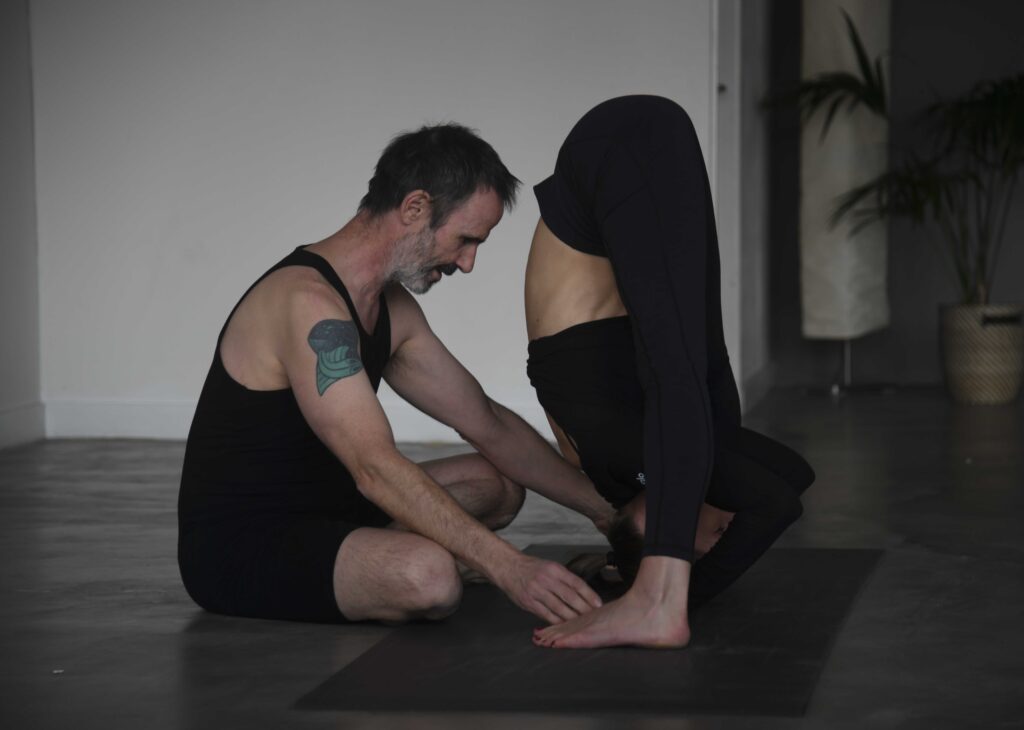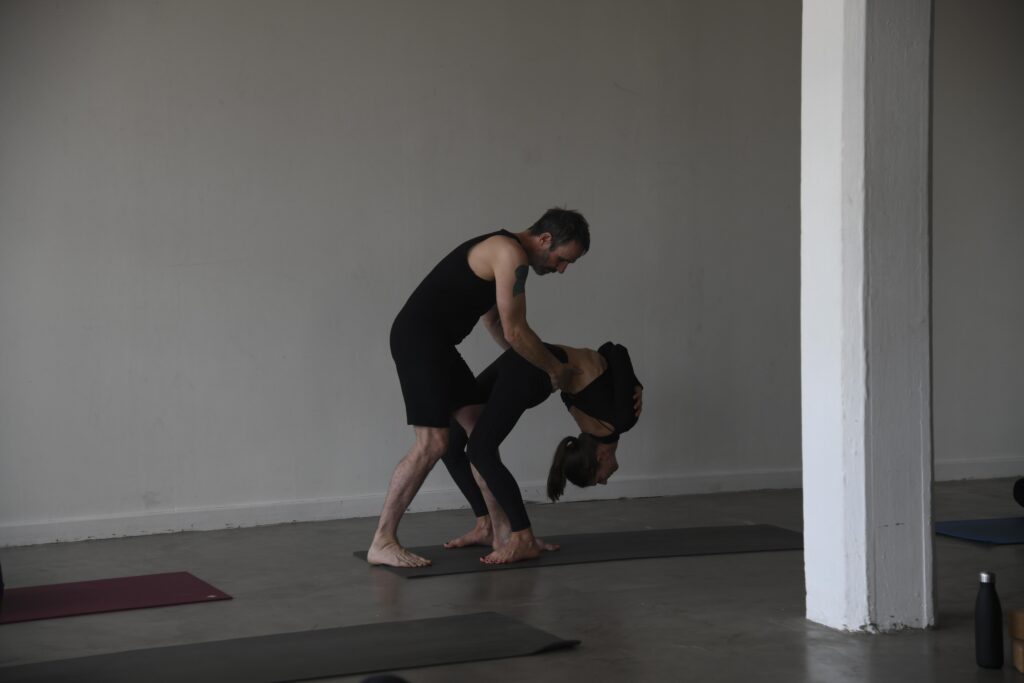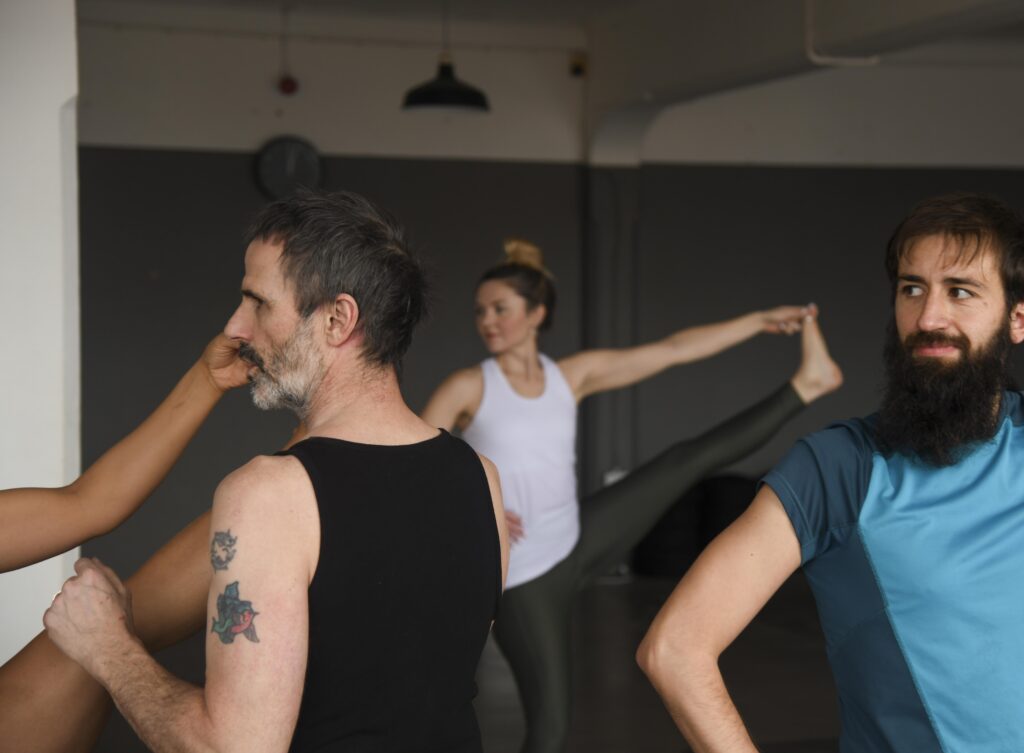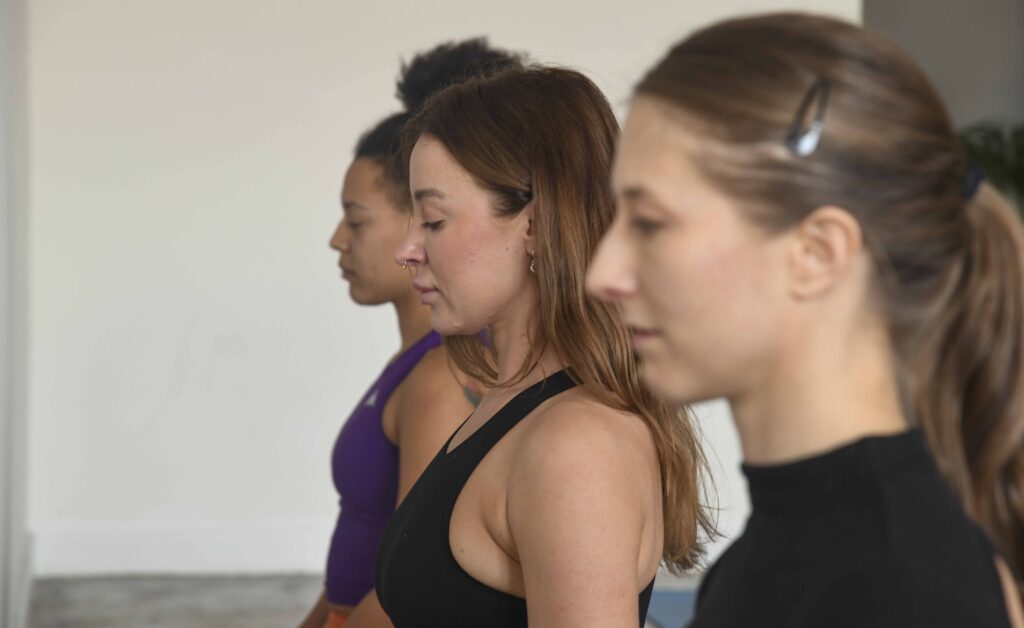A Mysore-style Ashtanga Yoga class is a personalised self-practice session. In these classes, all students follow the same sequence of postures, but the practice is customised to each individual’s level and needs. Guided and supported by myself, students work through their practice at their own pace.
I will offer personalised guidance, suggesting ways to approach the postures that best suit the student’s needs.
I will also advise on how much of the sequence to practice for maximum benefit and when it’s appropriate to move on to the next posture(s)


In Ashtanga Yoga, students follow a set sequence of postures that progressively increase in complexity and intensity. Each posture serves as a foundation for the next, building on what has come before.
Regardless of experience, the format remains consistent. The practice begins with Surya Namaskar A & B (sun salutations), which establish the foundation by setting the rhythm and breath while introducing key elements that support the entire practice.
The standing postures help cultivate grounding, balance, strength, and flexibility.
In the Primary Series, the seated postures further enhance flexibility, strength, technique, and confidence. The focus here is on externally rotating the hips, increasing awareness of pelvic movement, creating space in the back of the body, and developing shoulder stability and mobility, all in preparation for the demands of backbending.
As you progress, you also begin to recognize and release habitual movement patterns, allowing for deeper work in pranayama (breath control), meditation, and the more advanced postures of Ashtanga’s later series.
Finally, the finishing postures help to calm and steady your nervous system after the physical exertion, preparing both body and mind for deep relaxation at the end of your practice


The Ashtanga Yoga pranayama sequence is a structured set of breathing practices designed to balance energy and calm the mind. It begins with simple ujjayi breathing and gradually progresses to more advanced techniques like nadi shodhana (alternate nostril breathing) and kumbhaka (breath retention). These practices aim to regulate the flow of prana, or life force, within the body.
Traditionally, pranayama is introduced only after a student has established consistency in the asana practice. It is usually done seated, with specific ratios of inhale, hold, and exhale taught in stages to safely increase lung capacity and control. This gradual approach ensures stability in both body and mind.
Over time, the sequence is believed to cleanse subtle energy channels, strengthen concentration, and prepare the practitioner for meditation. In the broader context of yoga, pranayama serves as a bridge between physical postures and deeper spiritual practices, making it an essential part of the eight-limbed path.
The sequence is taught every Sunday morning after the Mysore session and is free to all those who attend.